Robert Venturi, The Strip seen from the desert with Denise Scott Brown in the foreground, 1966 © Venturi, Scott Brown and Associates, Inc., Philadelphia.
Opening Reception: Las Vegas Studio
Curators Hilar Stadler and Martino Stierli
Oct 28, 2010
(6pm)
Opening Reception
Join the Graham Foundation for the opening of Las Vegas Studio: Images from the Archives of Robert Venturi and Denise Scott Brown. This event is free and open to the public.
In 1968, American architects Robert Venturi, Denise Scott Brown, and Steven Izenour, with students from Yale University, embarked on a groundbreaking investigation of the Las Vegas Strip. Their fresh way of looking at the city: the influence of popular culture, advertising, film and the experience of the built environment from a moving automobile extended the categories of the ordinary, the ugly, and the social into architecture. Their use of photography and film as a research methodology became as revolutionary as their findings, which were published in the legendary 1972 book, Learning from Las Vegas. Offering great insight into the creation of this groundbreaking publication, the exhibition, Las Vegas Studio: Images from the Archives of Robert Venturi and Denise Scott Brown, curated by Hilar Stadler and Martino Stierli in collaboration with artist Peter Fischli, presents original research materials from the archives of Venturi, Scott Brown and Associates, Inc.
Las Vegas Studio: Images From the Archives of Robert Venturi and Denise Scott Brown is organized by The Museum im Bellpark, Kriens, Switzerland.
For more information on the exhibition, Las Vegas Studio: Images from the Archives of Robert Venturi and Denise Scott Brown, click here.

Seventeenth Church of Christ, Scientist, Chicago;
designed by Harry Weese and Associates, 1968.
Photo by Orlando Cabanban.
Printed with permission from W.W. Norton & Company.
The Architecture of Harry Weese
Robert Bruegmann
Oct 26, 2010
(6pm)
Talk
Seventeenth Church of Christ, Scientist, Chicago
55 East Wacker Drive
Chicago, IL 60601
Reservations are suggested.
Please note location.
On Tuesday, October 26, the Graham Foundation for Advanced Studies in the Fine Arts will host a free lecture celebrating the release of The Architecture of Harry Weese, a new book by Robert Bruegmann and Kathleen Murphy Skolnik. The public is invited to experience the architecture of Harry Weese firsthand by joining Bruegmann for a lecture on the architect’s legacy in one of his most important buildings, the Church of Christ, Scientist, Chicago. Built in 1968, the church is a consummate example of the architect’s pioneering style and his significant contributions to Chicago’s architectural history. The lecture will be followed by a book signing.
During a career that spanned half a century from the 1930s to the 1980s, Harry Weese (1915 - 1998) produced a large number of significant designs ranging from small but highly inventive houses to large urban scale commissions like the Washington, D.C. Metro system. As the first monograph solely devoted to Weese’s work, the book revives the reputation of a visionary architect. This book takes its place within a fast-growing revival of interest in the work of Weese and a number of his friends and contemporaries with shared assumptions and sensibilities, notably Eero Saarinen, Edward Larrabee Barnes, I. M. Pei, Ralph Rapson, and Paul Rudolph. As important as Weese’s buildings were, though, they were only one part of what almost all his contemporaries recognized as his seemingly inexhaustible creativity. Because Weese believed that design was essentially problem-solving, he was willing to apply his skills to everything from a piece of furniture to an entire city. The city on which he lavished the most attention was his own city, Chicago, where he seemed to be everywhere at once, praising, criticizing, cheerleading, and pouring out ideas for creating a humane and livable place for citizens of all walks of life. Although influenced to some degree by the rational, and often austere, work of European modernists like Mies van der Rohe, in most of his own oeuvre Weese instead followed the example of Nordic architects like Gunnar Asplund and Alvar Aalto in favoring natural materials, human scale, and comfort; his work was characterized by a deep respect for older buildings and existing urban patterns and a fondness for unexpected, often idiosyncratic design decisions.
The Architecture of Harry Weese was supported by a 2004 grant from the Graham Foundation. It is published by W.W. Norton & Company. Books will be available for purchase the day of the event.
ABOUT THE AUTHORS
Robert Bruegmann, an historian of architecture, landscape, and the built environment, is University Distinguished Professor of Art History, Architecture and Urban Planning at the University of Illinois at Chicago. His most recent book is Sprawl: A Compact History (University of Chicago Press).
Kathleen Murphy Skolnik holds an MA in art history with a concentration in architectural history from the University of Illinois at Chicago and teaches art history at Roosevelt University in Chicago.

Tristan Perich
Lampo Performance Series
Oct 16, 2010
(8pm)
Performance
Reservations are required
On Saturday, October 16, Tristan Perich will present his 1-Bit Symphony, a five-movement work that uses binary electrical pulses to create sound and light.
Trained in mathematics and piano, Perich (b. 1982, New York) works in acoustic and electronic music. Best known for his constructions that explore the physicality of sound and the polyphonic potential of 1-bit audio, his “1-Bit Music” (2004-05) and “1-Bit Symphony” (2010) celebrate the virtuosity of electricity. Neither release is a traditional recording. Instead, each is a music-generating circuit, housed in a CD jewel case with a headphone jack. Perich also has composed several works for musicians with 1-bit music accompaniment, and is in the music group the Loud Objects (with Kunal Gupta and Katie Shima), which performs by soldering its own noise-making circuits live in front of the audience.
As a visual artist, his projects include “Machine Drawings,” pen-on-paper drawings executed by machine, and 1-bit video, low-resolution black and white images synthesized by microchips and displayed on cathode ray televisions.
His work has been recognized by Prix Ars Electronica, commissioned by Rhizome, Bang on a Can and turbulence.org, and performed and exhibited throughout the U.S. and abroad. Perich graduated from Columbia University, and more recently received a master’s degree in art, music and electronics at the Interactive Telecommunications Program at Tisch School of the Arts, New York University.
http://www.tristanperich.com/
Perich's 1-Bit Symphony was reviewed by the New York Times in August. Read the article here.
Presented in partnership with Lampo.
Founded in 1997, Lampo is a non-profit organization for experimental music, sound art and intermedia projects. For information and to add your name to the Lampo list, contact info@lampo.org or visit www.lampo.org.

Gold Coast Urban Forage with Nance Klehm
Oct 05, 2010
(5pm)
Other
Reservations are required.
On Tuesday, October 5, 2010, Nance Klehm will lead a small group on a two hour Urbanforage of Chicago’s Gold Coast. On this informal guided walk through the spontaneous and cultivated vegetation of the urbanscape, participants will learn to identify plants, hear their botanical histories and stories of their use by animals and humans, and share antidotes of specific experiences with these plants. The Urbanforage will begin in the garden of the Graham Foundation’s Madlener House, where participants are invited to sample an herbal beverage made by the artist.
Nance Klehm began leading Urbanforages in 2006 in suburbs and cities including; Chicago, Los Angeles, Montreal, Salt Lake City, Philadelphia, New York and Mexico City. She is an ecological systems designer, landscaper, horticultural consultant, permacultural grower, consultant, speaker, and teacher. She is respected internationally for her work on land politics and growing for fertility. She has lectured at the Museum of Contemporary Art, the Hammer Museum in Los Angeles, the University of Cincinnati, and the Canadian Centre for Architecture in Montreal. She has taught at the University of California, Los Angeles, Northwestern University in Evanston, Illinois, and Dartington College in the United Kingdom. She writes a regular column for Arthur magazine and was included in the books Radical Homemakers (by Shannon Hayes), Participatory Autonomy (edited by Rick Gribenas), and The Revolution Will Not Be Microwaved: Inside America’s Underground Food Movements (by Sandor Katz).
Nance Klehm’s work was featured in the exhibition, Actions: What You Can Do With the City, which was on view at the Graham Foundation October 16, 2009 – March 13, 2010. http://cca-actions.org/ This event is presented in conjunction with Chicago Artist’s Month.
Related Links
Chicago Artists Month
http://www.chicagoartistsresource.org/visual-arts/node/28865
Spontaneous Vegetation
http://spontaneousvegetation.net/
Actions: What You Can Do With the City
http://cca-actions.org/

"Marina City: Bertrand Goldberg’s Urban Vision" Book Signing and Talk
Igor Marjanovic & Katerina Rüedi Ray
Jun 21, 2010
(6pm)
Talk
RESERVATIONS FOR THIS EVENT ARE FULL.
Graham Foundation grantees and authors Igor Marjanovic and Katerina Rüedi Ray will discuss their recently published book, Marina City: Bertrand Goldberg’s Urban Vision.
Chicago has many iconic buildings, but perhaps none as instantly recognizable as Bertrand Goldberg’s Marina City. Occupying an entire city block—number 1 of the original town of Chicago—the mixed-use riverside complex consists of two cylindrical sixty-five-story residential towers, a saddle-shaped auditorium, a midrise office building, and a rectangular podium comprising an open plaza with a variety of services. Each tower contains more than four hundred apartments and a continuous, upward-spiraling ramp of parking spaces. Built between 1960 and 1967 at a time when Chicagoans were fleeing to the suburbs, the hugely ambitious project was architect Goldberg’s collaborative attempt at urban revitalization—as he called it, “a city within a city.”
Igor Marjanovic and Katerina Rüedi Ray here present the first history of this architectural landmark. Featuring newly available archival texts, photographs, and drawings, this unique building’s biography explores not only its architectural achievements, but also the ingenious marketing campaign and complex network of political partnerships necessary to realize Goldberg’s urban vision. As the architect’s beautifully designed brochures detailed, Marina City offered residents a self-contained world that included a theater, restaurant, bowling alley, health club, ice-skating rink, grocery store, a bank, and much more. It is no wonder that before it was finished 2,500 applications had been submitted to rent 896 apartments. From financing to the structural engineering, this one-of-a-kind volume fills in missing chapters of modern architecture, urban politics, and labor history.
Igor Marjanovic is assistant professor of architecture at Washington University in St. Louis. Katerina Rüedi Ray is director and professor of the School of Art at Bowling Green State University. Marina City: Bertrand Goldberg's Urban Vision was supported by a grant from the Graham Foundation. Books will be available for purchase after the talk.

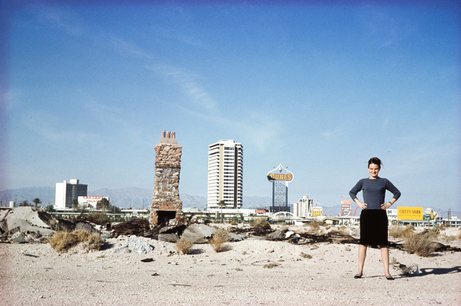
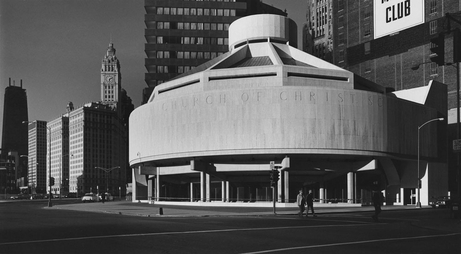
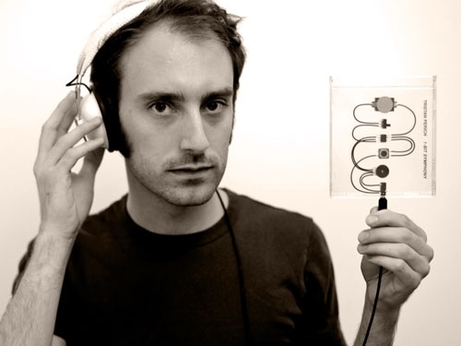
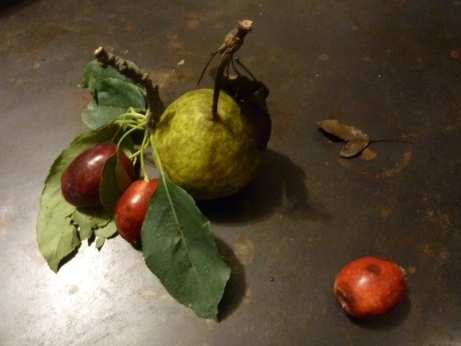
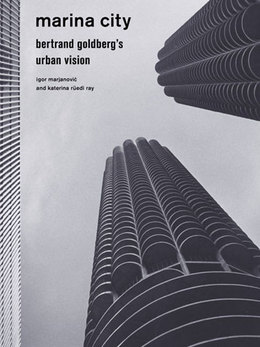
 PREVIOUS POSTS
PREVIOUS POSTS